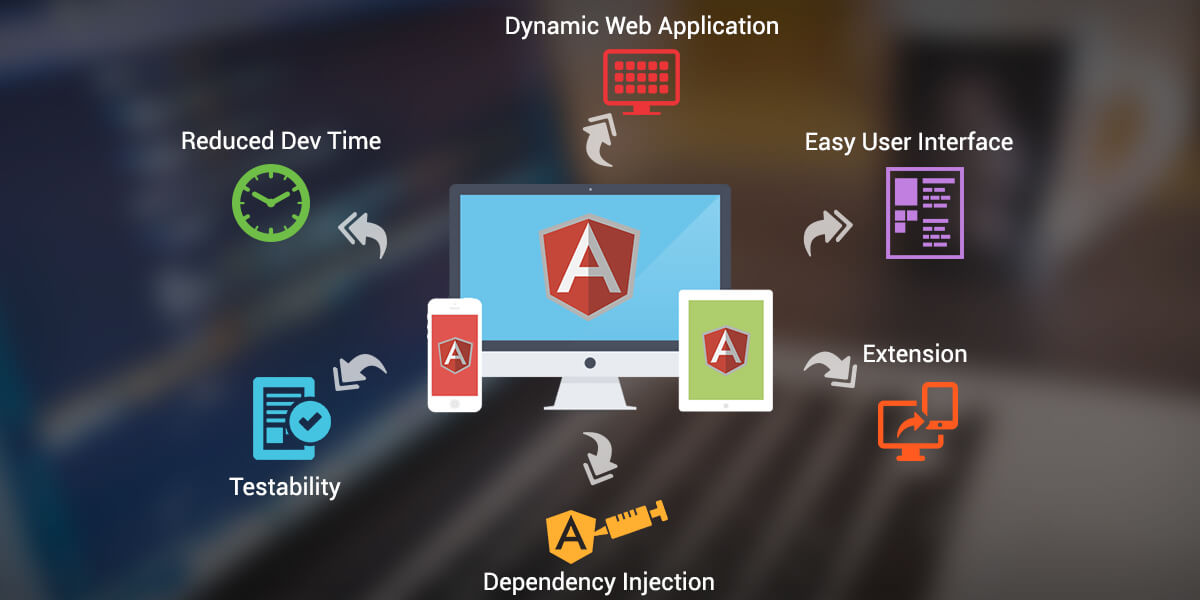SERVICES
WEB DESIGNING


AngularJs
AngularJS is a very powerful JavaScript Framework. It is used in Single Page Application (SPA) projects. It extends HTML DOM with additional attributes and makes it more responsive to user actions. AngularJS is open source, completely free, and used by thousands of developers around the world.

CSS
CSS is used to control the style of a web document in a simple and easy way.CSS is the acronym for "Cascading Style Sheet".CSS handles the look and feel part of a web page. Using CSS, you can control the color of the text, the style of fonts, layout designs,variations in display for different devices.

HTML
HTML stands for Hyper Text Markup Language, which is the most widely used language on Web to develop web pages.Hypertext refers to the way in which Web pages (HTML documents) are linked together. Thus, the link available on a webpage is called Hypertext.
WEB DEVELOPMENT

XML
In computing, Extensible Markup Language (XML) is a markup language that defines a set of rules for encoding documents in a format that is both human-readable and machine-readable. The W3C’s XML 1.0 Specification and several other related specifications,—all of them free open standards—define XML.


.Net
.NET is a Microsoft web services strategy to connect information, people, systems, and devices through software, making it easier for users to share and use their information between multiple websites, programs, and computers.

JavaScript
JavaScript is a lightweight, interpreted programming language. It is designed for creating network-centric applications. It is complimentary to and integrated with Java. JavaScript is very easy to implement because it is integrated with HTML. It is open and cross-platform.
SOFTWARE DEVELOPMENT
The concept of Custom Software Development was established to help customers with specific online needs and requirements or even to put varied ideas into practice. It entails the modification and customization of all established and already developed software solutions. Some software solutions may also be designed right from scratches and provide scope for further development. With continuous developments in the complexities involved in all e-commerce and other online business activities, it is essential to meet the business as well as the customers’ requirements and preferences in least time with maximum efficiency.
Custom Design Software isn’t intended to provide solutions to large masses. Instead, it is supposed to ensure that the very specific requirements are fulfilled for the clients. And their ideas are taking shape exactly the way they want it to. Progressive technologies and advanced solutions are utilized for the purpose of better fulfilment of the customers’ expectations and preferences. Custom Software Development takes place in a stage wise format, with every single step being taken cautiously and according to procedure. This allows the development to take place with all nuances and technical issues sorted out. Even the hidden dangers are identified and consequently rectified.

Since the users of pre-developed software are large unrelated groups, there isn’t much scope for modifying or customizing the packages. The software developed for mobile phone applications and other handheld communication devices is an example of custom software development without the usage of a common group or relativity. Inversely, software developed by many different manufactures may be put to use in a single factory.
The software development services provided by various software companies entail custom programming and also services for software engineering. In this regard, SEESPL has tremendous experience in developing custom software for clients. Moreover, we also provide other solutions including custom database programming, development services for web applications, website development, website designing and hosting.
SEESPL is well established and known for providing the most appropriate solutions for all services for Custom Software Development and Software Engineering Services.
CLOUD COMPUTING
Cloud-based services are ideal for businesses with growing or fluctuating bandwidth demands. If your needs increase it’s easy to scale up your cloud capacity, drawing on the service’s remote servers. Likewise, if you need to scale down again, the flexibility is baked into the service. This level of agility can give businesses using cloud computing a real advantage over competitors – it’s not surprising that Senior Management as a top driver for cloud adoption.
Businesses of all sizes should be investing in robust disaster recovery, but for smaller businesses that lack the required cash and expertise, this is often more an ideal than the reality. Cloud is now helping more organisations buck that trend. According to Aberdeen Group, small businesses are twice as likely as larger companies to have implemented cloud-based backup and recovery solutions that save time, avoid large up-front investment and roll up third-party expertise as part of the deal.
The beauty of cloud computing is that the servers are off-premise, out of sight and out of your hair. Suppliers take care of them for you and roll out regular software updates – including security updates – so you don’t have to worry about wasting time maintaining the system yourself. Leaving you free to focus on the things that matter, like growing your business.

Cloud computing cuts out the high cost of hardware. You simply pay as you go and enjoy a subscription-based model that’s kind to your cash flow. Add to that the ease of setup and management and suddenly your scary, hairy IT project looks at lot friendlier. It’s never been easier to take the first step to cloud adoption.
When your teams can access, edit and share documents anytime, from anywhere, they’re able to do more together, and do it better. Cloud-based workflow and file sharing apps help them make updates in real time and gives them full visibility of their collaborations.
With cloud computing, if you’ve got an internet connection you can be at work. And with most serious cloud services offering mobile apps, you’re not restricted by which device you’ve got to hand. The result? Businesses can offer more flexible working perks to employees so they can enjoy the work-life balance that suits them – without productivity taking a hit. One study reported that 42% of workers would swap a portion of their pay for the ability to telecommute. On average they’d be willing to take a 6% pay cut.
